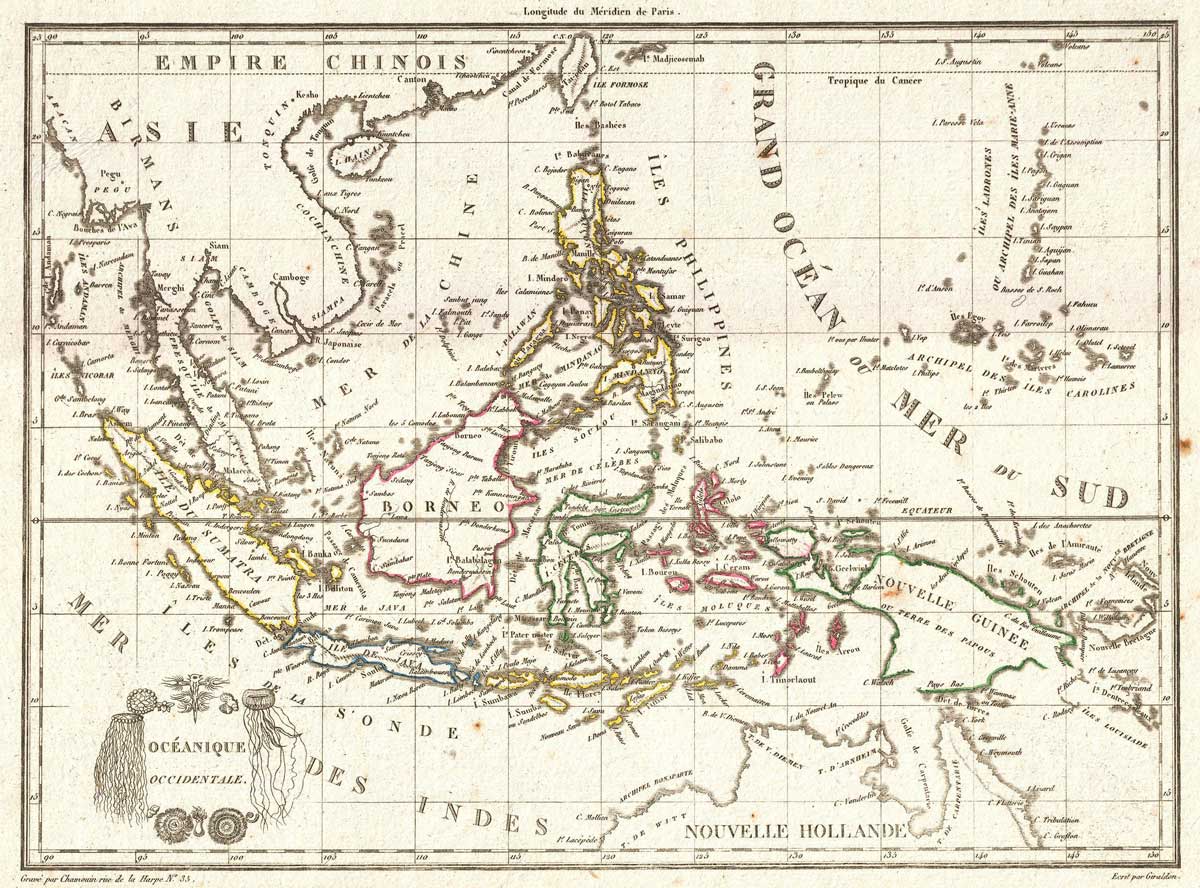Geopolitical Realities
The depth of China’s influence over South-East Asia.

The spectacular rise of China over the past four decades has brought the world unprecedented opportunities and challenges, but no region has experienced this new geopolitical reality more keenly than South-East Asia. The 11 regional countries have benefited enormously from China’s economic rise, but they are also the first to feel the pounding movements of the awakening giant.
Sebastian Strangio’s In the Dragon’s Shadow: Southeast Asia in the Chinese Century offers an insightful account of how China’s rise has shaped the region’s economic and strategic landscape, as well as the way China’s smaller neighbours have struggled to deal with the emerging superpower. Each of these 11 nations faces similar challenges in dealing with China, yet, as Strangio writes, ‘no two countries approach China in quite the same way’. The different approaches are informed by their different historical experiences and different perceptions of the threats and opportunities brought about by China’s rise.
Among the nine countries examined in the book (Brunei and East Timor are excluded), Vietnam is the most China-wary, while Cambodia is the most pro-China. Vietnam has benefited economically from the rise of China, which is now its largest trading partner and source of imports, but the country’s bitter historical experience of repeated invasions and the boiling South China Sea dispute have made Vietnam constantly wary of China’s growing influence. Hanoi is reluctant to join China’s Belt and Road Initiative (BRI) and has allowed the establishment of only one Confucius Institute. At the same time, it has been building military capabilities and continuously upgrading ties with the US and its allies to counterbalance China in the South China Sea.
On the contrary, Hun Sen’s Cambodia has unwaveringly embraced China despite the fact that Beijing sponsored the Khmer Rouge, Hun Sen’s bitter enemies during the 1970s and 1980s. For Cambodia, the benefits offered by China in the form of trade, investment, tourism, concessional loans and, especially, its support for Hun Sen’s authoritarian regime, have far outweighed any possible security concerns. Cambodia even went so far as to act, in many analysts’ view, as a proxy for China in the South China Sea issue.
The seven other countries in the middle find themselves more or less on either side of the ‘love-hate China’ spectrum, although most of them try to maintain a middle ground. Singapore, for example, has tried to be a friendly partner of China given the strong economic ties between the two countries, but has also been straightforward in resisting unwarranted political influences from Beijing and its expansive South China Sea claims, which threaten Singapore’s own survival and prosperity as a micro-state highly dependent on respect for international law and maritime trade. This has generated significant bilateral tensions, including China’s seizure of nine Singaporean armoured personnel carriers en route from military exercises in Taiwan in 2016 and Singapore’s expulsion in 2017 of a Chinese-born American academic for what it said to be his covert effort to influence Singapore’s foreign policy on behalf of an unnamed foreign government, widely believed to be China.
Meanwhile, as a claimant state in the South China Sea, Malaysian elites, especially those in the military, have also become concerned about China’s growing muscle. Yet Malaysia has so far adopted a friendly approach towards China, especially under the premiership of Najib Razak. Apart from the close bilateral cultural and economic ties maintained by Chinese Malaysians, who account for almost a quarter of the country’s population, China’s huge investments in Malaysia’s infrastructure projects under the BRI and Beijing’s willingness to back an embattled Najib amid his ongoing 1Malaysia Development Berhad corruption scandal have also played their part.
Throughout the book what stands out is the depth of China’s influence over South-East Asia, rooted in deep bilateral economic ties and the strong connections maintained by generations of ethnic Chinese migrants living in the region. This influence, however, is also both volatile and fragile; the region will not become an established sphere of influence for China anytime soon. Apart from the South China Sea dispute, which constantly puts pressure on relations, domestic political changes in respective countries may also reverse China’s diplomatic fortunes, as shown by the case of Myanmar or Malaysia. Countries like the Philippines, Thailand and Indonesia have also recently taken steps to moderate their friendly attitude towards Beijing. More importantly, the intensifying strategic rivalry between the US and China means that regional countries will be under Washington’s increased scrutiny if they move too close to China. Even China’s closest partners like Cambodia or Laos may also have to think twice about tying their fate with China’s.
Strangio’s rich experience in the region accumulated through his many years living in Cambodia and Thailand, coupled with field trips to interview various sources across South-East Asia, enables him to provide readers with thorough and well-informed analyses. Built upon the author’s deep understanding of each country’s history as well as how they have interacted with China in the past, the book familiarises readers with not only regional countries’ contemporary relations with China but also their history and domestic politics. Strangio’s journalistic writing style makes it superbly readable; he should be applauded for this important and timely contribution, a must read for anyone interested in both the past and likely future of China and South-East Asia.
In The Dragon’s Shadow: Southeast Asia in the Chinese Century
Sebastian Strangio
Yale 360pp £20
Le Hong Hiep is Fellow at the ISEAS – Yusof Ishak Institute in Singapore and the author of Living Next to the Giant: The Political Economy of Vietnam’s Relations with China under Doi Moi (ISEAS, 2016).